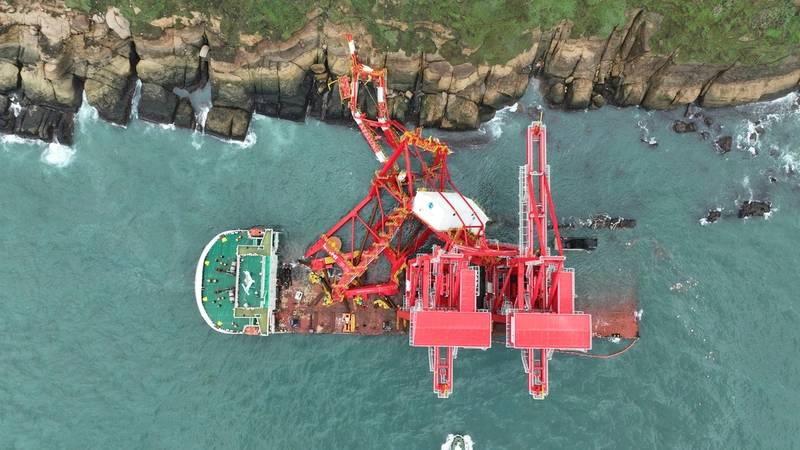Scottish subsea specialist Sulmara has supported a major fuel recovery operation from typhoon-struck cargo ship in shallow waters off Taiwan.
At the request of the Taiwanese government, Sulmara mobilized a WAM-V 16 uncrewed surface vehicle (USV) and a team of survey specialists to assist in the emergency fuel recovery operation for the heavy transport vessel, Yu Zhou Qi Hang.
The operation was launched to help salvage cargo from the heavy transport vessel which ran aground with almost 300 t of fuel oil on board during one of the worst typhoons to hit Taiwan in decades.
The 143-meter-long vessel, which was also carrying three gantry cranes, lost power off the coast of Taiwan on October 29 asTyphoon Kong-rey struck.
While all 17 crew members on board were safely recused by a Coast Guard vessel, the Taiwanese marine contractor Dong Fang Offshore was called upon to deploy the Orient Constructor, a vessel capable of lifting salvage equipment and pumps onto the wreck.
However, the operation presented high risks because maneuvering the Orient Constructor close to the grounded vessel in adverse weather and shallow waters was further complicated by limited information on the potential subsea hazards below the keel.
To mitigate the risk of damage to the Orient Constructor and ensure safe navigation in the shallow waters, Dong Fang Offshore worked alongside Sulmara to conduct a complex seabed survey.
Sulmara equipped a WAM-V 16 USV with a multibeam echosounder (MBES), a sensor used to map the seabed. The data collected was used to independently verify and cross check existing seabed data, instilling confidence to proceed.
“It was a huge challenge. There was a risk that objects from the vessel could drop into the sea as well as other debris and hazards. Therefore, a USV was chosen because of the benefits it could bring.
“This USV is a very shallow-drafted vessel which could man oeuvre around this challenging environment. However, because of the weather conditions, we couldn’t operate the USV in the typical way by releasing her and letting her sail alone. We had to ensure we could launch and deploy the vessel safely.
“We had historical data from previous work on the site so we knew factors like water depth variants and they made for safe water for the USV. We were able to apply that data while our marine operations supervisor came up with an alternative methodology for ensuring a safe operation which included connecting a towing line to the USV as back up in case anything happened, and we could bring her back,” said Denny Wang, Survey Operations Supervisor for Sulmara.
Within just two days, the WAM-V 16 was demobilized after safely completing its mission. The rapid response also enabled Dong Fang Offshore to complete the salvage operations within a week of arriving on site.
“On initial assessment of the situation, we didn’t think we could collect data within a week because there wasn’t any weather window, and the site is not an area we typically work in. But after carrying out an assessment and then assessing the risks again – sea state and wave frequency – the team believed we could do it safely.
“We reacted and found a way to operate in a short period of time. It also shows the flexibility of the USV and how she can perform in different ports in different locations,” Wang concluded.

